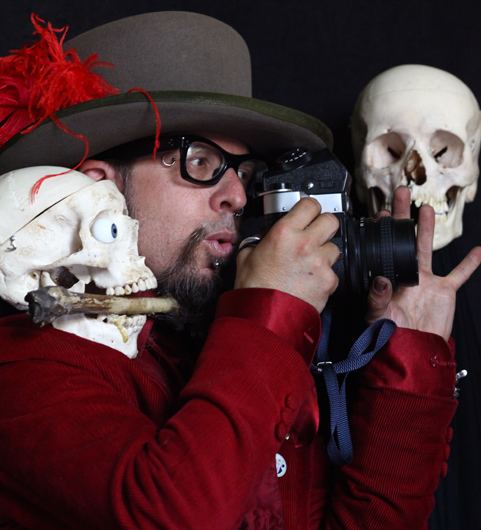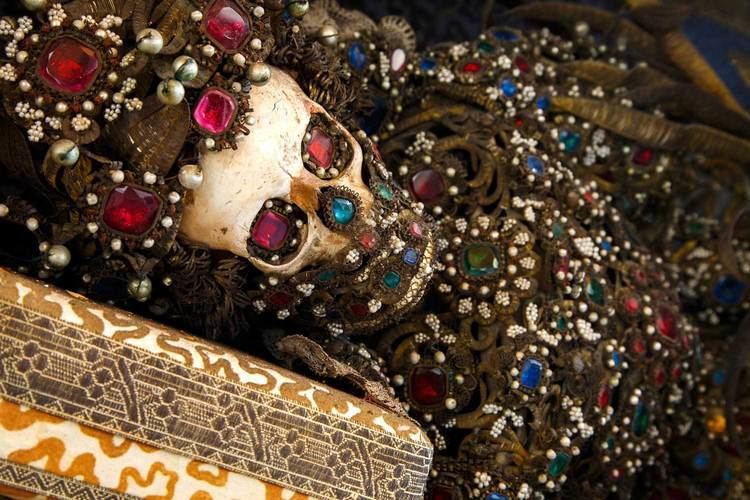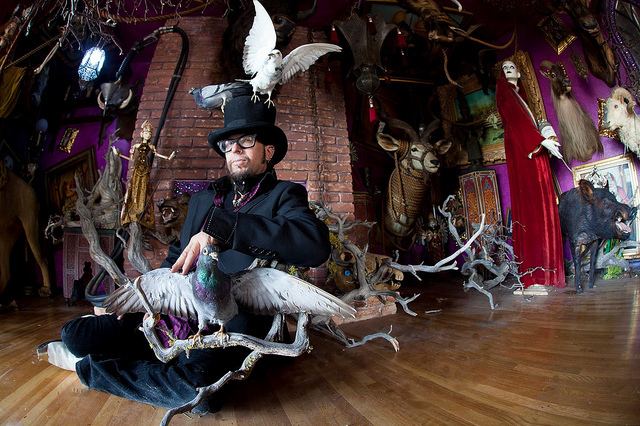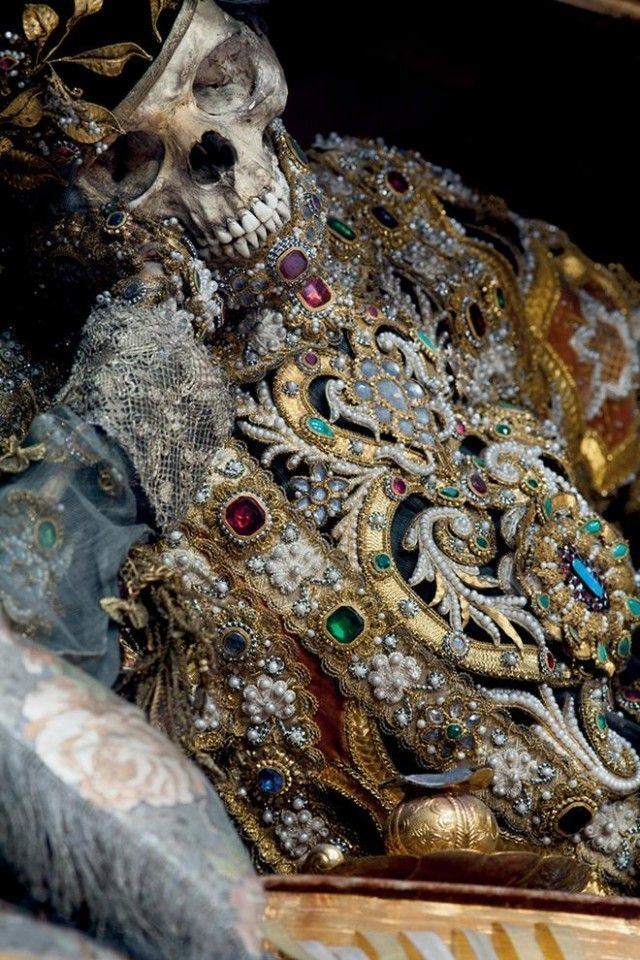Name Paul Koudounaris | Role Author | |
 | ||
Books Heavenly Bodies: Cult Trea, The Empire of Death: A Cultural, Memento Mori: The Dead Am | ||
Sex ghosts gilded mummies and jeweled skeletons with paul koudounaris
Paul Koudounaris is an author and photographer from Los Angeles. He has a PhD in Art History and his publications in the field of charnel house and ossuary research have made him a well-known figure in the field of macabre art and art history. He is a member of The Order of the Good Death.
Contents
- Sex ghosts gilded mummies and jeweled skeletons with paul koudounaris
- Part 1 sex ghosts of the palermo catacombs by dr paul koudounaris
- Research and publications on human remains in religious art
- The Empire of Death
- Heavenly Bodies
- Memento Mori
- Research on sex ghosts and demonic cats
- References
Part 1 sex ghosts of the palermo catacombs by dr paul koudounaris
Research and publications on human remains in religious art

In 2006, he started extensively studying the use of human remains in religious ritual and as a decorative element in sacred spaces. He began writing about and photographing them for European newspapers, and became an important contributor to magazines which specialize in the paranormal, such as the Fortean Times, covering unusual and spiritual phenomenon surrounding sacred remains throughout the world. In the process, he also compiled material for the first ever history of bone-decorated religious structures, visiting over 70 sites on four continents, some of which had never before been photographed or open to the public.
The Empire of Death

In 2011, his ossuary research and photos were published by Thames and Hudson as The Empire of Death, the title taken from a caption at the Catacombs of Paris, one of the sites included in the book. The book included other famous ossuaries, such as the Sedlec Ossuary and the crypt of Santa Maria della Concezione dei Cappuccini, where he had been granted special permission by the monastery and Italian cultural authorities to photograph. A host of similar, previously unknown sites were also included in the book, however, and the text created a context for understanding the construction of these types of elaborate ossuaries as a Catholic phenomenon that was initiated during the Counter-Reformation. The book received extensive media coverage, and was lauded in publications internationally and was named among the best books of the year by the London Evening Standard and awarded Coup de Coeur by the Association of Paris Librarians.
Heavenly Bodies

His book Heavenly Bodies was released in 2013, and delved even deeper into study of obscure macabre art history by presenting the forgotten story of a group of skeletons taken from the Roman Catacombs in the seventeenth century and completely decorated with jewels by teams of nuns. The book described how these extravagant cadavers, known as catacomb saints, were mistakenly identified as Early Christian martyrs, then sent primarily to German-speaking lands where they were decorated and placed into Catholic Churches. Such skeletons were mostly removed and destroyed during the Enlightenment, but Koudounaris tracked down all the surviving examples and photographed them for the book. The book received a tremendous amount of press, and Koudounaris was dubbed "Indiana Bones" by the UK press, in reference to his curious and macabre discoveries, and the book was named by Dazed and Confused as one of the ten best art and photography books of the year.
Memento Mori
The third book by Koudounaris on macabre visual culture involving human remains was released in 2015 and titled Memento Mori. In interviews on the book he indicated that it was intended to present a much more global perspective than the previous books by included lengthy sections involving material from Africa, Asia, and South America--especially from the country of Bolivia, where he had been studying skull rituals (involving an annual festival to skulls called Natitas in La Paz) for the last ten years. He said that unlike the previous books, this one was primarily a photographic rather than historical an anthropological study, and that he intended it to be his final work on sacred human remains. The book garnered honors as one of American Photo magazine's ten best new photography books.
Research on sex ghosts and demonic cats
During the research for The Empire of Death, he acquired huge amounts of corollary folklore relating to different macabre subjects. One of these was otherworldly erotic encounters between the living and dead. He refers to the phenomenon as Sex Ghosts, but indicates the history of this type of encounter can be dated all the way to the ancient world. While it is now attributed to ghosts, he says it has previously been attributed to any number of sources. He has given public discussion of the topic internationally, and has done several interviews touching on the subject. He also began to research folklore about demonically-possessed cats, and has done interviews and lectures about this topic around the USA.
